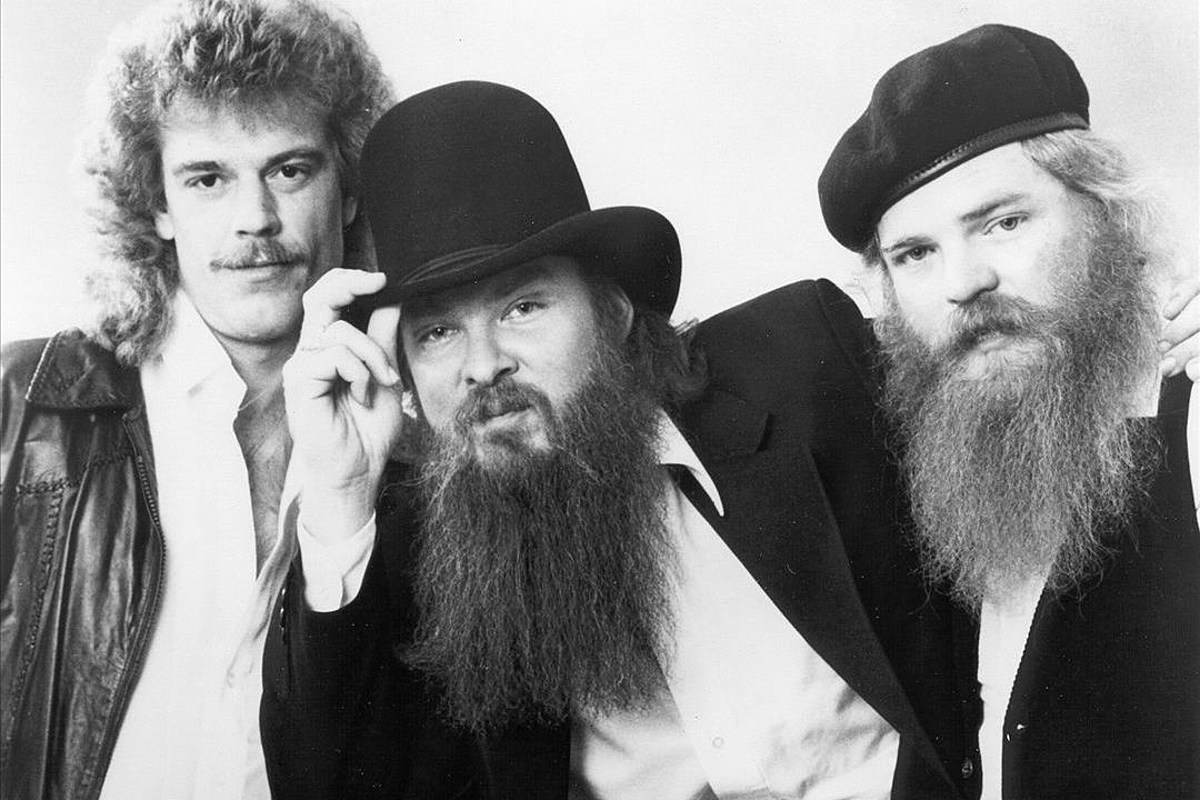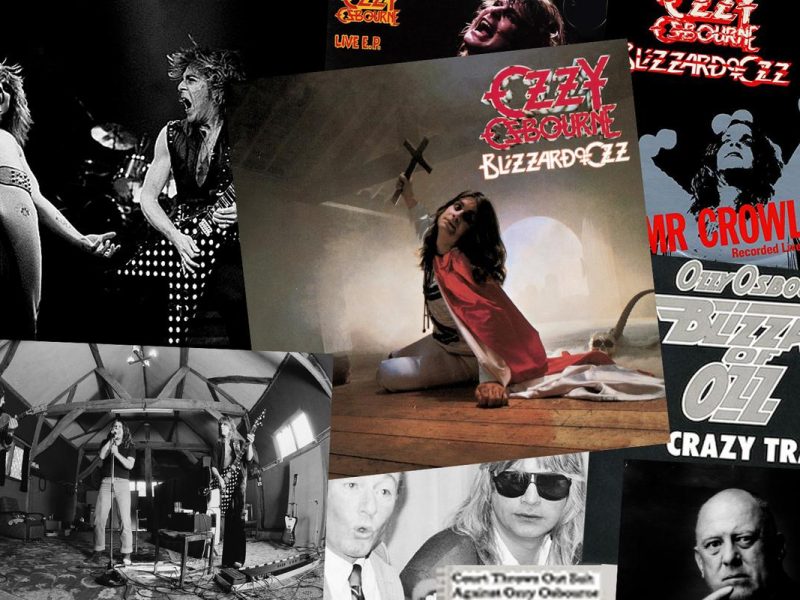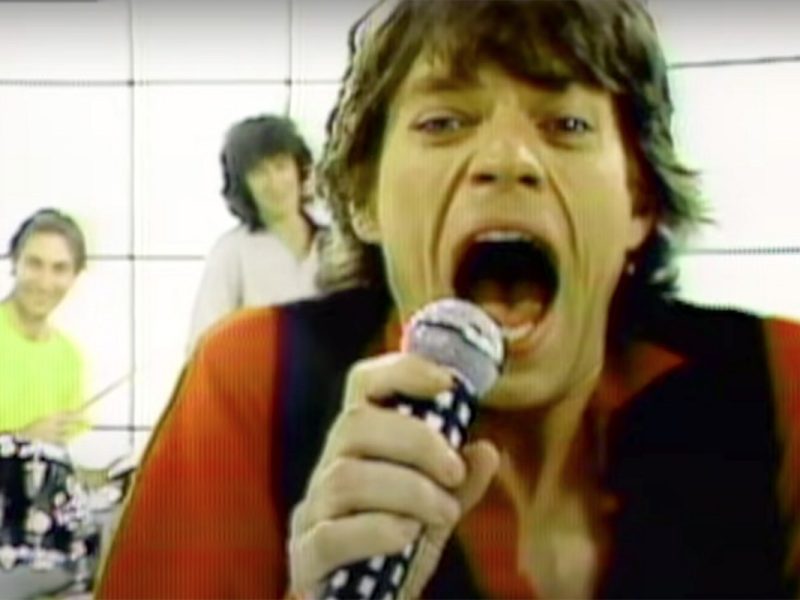Deguello was the last ZZ Top album of the ’70s, and in more ways than one. Featuring, as it does, the first appearance of the band’s extraordinarily long beards and (gasp!) keyboards, this album represents ZZ Top in the waning moments of its life as that “little ol’ band from Texas.” You can almost hear the hoopty-car space shuttle making its final approach, ready to whisk them off to MTV.
But not yet. Deguello, released in November 1979, might have made their sound a touch more radio-ready, but it also found a way to retain all of the boogie-woogie salaciousness, the glinty-eyed humor and the country-fried blues that had defined ZZ Top’s sound through a career-defining five-album run beginning in 1971.
Over that period, they’d been on the road nearly nonstop, only pausing long enough to record something before returning to the concert circuit. By 1977, Billy Gibbons, Frank Beard and Dusty Hill had scored three consecutive gold albums, but they were burned out.
“For six to seven years, we had somebody telling us what to do,” Beard told the Boston Globe in 1980. “You’ve got to have a road manager when you’re a band of Texans, because we’re just so wild that we’ll do what we want to do. … So, you have to have somebody all the time riding herd on you.”
Besides, with New Wave looming, it was time to regroup. Deguello found the trio tipping their 10-gallon hats to this electronic zeitgeist, even as the album went platinum on the strength of a pair of radio favorites in “I Thank You” and “Cheap Sunglasses.”
Listen to ZZ Top Perform ‘I Thank You’
Nobody Bothered to Shave During a Long Hiatus
Still, ZZ Top’s comeback had seemed anything but a forgone conclusion, despite a new contract with Warner Bros. After all, Beard emerged from rehab only to disappear into the Caribbean, while Gibbons moved to faraway Paris for a time. Quite frankly, they had no idea where Hill had gone.
“The Dust is very secretive about what he did,” Beard told the Globe. “The best I can understand is that he spent a whole lot of time in Mexico. He’s always loved Mexico. I don’t know if it’s the senoritas, or what it is. For a while, he was in Nassau. When I heard where he was, I hopped a ship over and just missed him on Freedom Island. But I really don’t know what else he did – whether he barely escaped with his life and didn’t want to get in trouble about being in places he shouldn’t be, or if he went down and apprenticed as a bullfighter or what.”
READ MORE: ZZ Top Breaks Through With ‘Tres Hombres’
During what turned into a lengthy hiatus, Gibbons later admitted they had become “virtual unknowns to each other.” In fact, he wasn’t even aware that Hill had also decided to go unshaven, as well. “We’d gotten really, really lazy,” Gibbons told the Caller-Times in 2005. “Nobody had bothered to shave. In simple terms, that’s exactly how it started.”
This long-awaited reunion rekindled a partnership, however, that went deeper than circumstance. Deguello, named after an unyielding fight song associated with the Mexican army, illustrated that this band was built to last – even after so long apart, even in an uncertain era of musical change.
Listen to ZZ Top Perform ‘I’m Bad, I’m Nationwide’
Synthesizers Make Their First Appearance
Songs like “I’m Bad, I’m Nationwide” (a tribute to Texas bluesman Joey Long) and “Cheap Sunglasses” became concert staples, while a dive into the shotgun-shack grooves of “Dust My Broom” (a Robert Johnson classic that originally rose to fame via Elmore James) grounded their initial dabblings with keyboards – helping Deguello stride a fine line between the grit of Tres Hombres and the sleekness of Eliminator.
“We used [synths] as a tool, and the great thing about it is we did not know what we were doing,” Hill told the Caller-Times. “So, we didn’t have any restrictions on ourselves. But that’s the way we do things. We truly like to have a record dictate how we’re going to record. We don’t do that first.”
READ MORE: ‘Sharp Dressed Man’ Remakes ZZ Top as Kings of Cool
This almost off-handed balance of seemingly incongruent impulses gave Deguello a timeless feel that some of ZZ Top’s next few projects lack. Their loose, organic approach played out most memorably with “Cheap Sunglasses,” a stalwart favorite which somehow only went to No. 89. “This song was actually written during a trip from the Gulf Coast up to Austin, Texas,” Gibbons told Guitar World in 2009. “A bright spot of creativity flared as we were passing the hamlet of La Grange, and I recited all three verses of ‘Cheap Sunglasses’ within the space of 20 miles. And that’s the way they stayed.”
The take was made complete by playing through a found-object 200-watt Marshall amp with a blown tube, something a country mile away from the funky feel of their Hohner Clavinet-driven take on “I Thank You,” which was originally co-written by Isaac Hayes for Sam and Dave and became a No. 34 hit for ZZ Top.
Listen to ZZ Top Perform ‘Cheap Sunglasses’
A Sound Both Modern and Age-Old
If they never again achieved that delicate symmetry, it’s probably the fault of ZZ Top’s determinedly relaxed modus operandi. “Every album is unto itself, so whatever sounds we need to come up with [we’ll use],” Hill told the Caller-Times. “If we don’t feel the song needs it, we don’t use anything extra. If we do, we do. It’s purely, absolutely, the song and the way the CD is going that dictates what we’re going to do.”
Both impulses, call it ZZ Top’s past and future, come together on “I’m Bad, I’m Nationwide.” This song featured the clavinet as well as an instrument given to ZZ Top by Long, the Gulf Coast legend.
“Joey loaned me a multi-stringed mandolin-like instrument from Parral, Mexico, and I put it to good use on ‘Nationwide.’ If you listen closely, you can hear close-miked mandolin-sounding rhythm accompaniment,” Gibbons told Guitar World, connecting Deguello with one of his earliest influences via Long’s appearances on recordings by Slim Harpo and Barbara Lynn. “He played on Lynn’s great hit record ‘We Got a Good Thing Going,’ which was covered by the [Rolling] Stones,” Gibbons added, “and which was really one of the important recordings that shaped my understanding of where it was I wanted to go with my life. It was good. And so was he.”
At the same time, that clavinet opened another door – leading to a room filled with shiny new objects. “It’s such an interesting sound,” Gibbons says, “that it ignited Dusty’s interest in learning some keyboard skills, and it was he who subsequently handled all the tickling of the ivories.”
When 1981’s follow-up El Loco arrived, ZZ Top could be found diving still deeper into synth experiments like “Groovy Little Hippie Pad.” Videos featuring spinning fur-covered guitars weren’t far behind. Deguello, however, was a canny distillation, something that sounded both modern and age-old – and the last dying ember of their original sound until a return to form with 1996’s Rhythmeen.
ZZ Top Albums Ranked
From the first album to ‘La Futura,’ we check out the Little ‘ol Band From Texas’ studio records.
Gallery Credit: Nick DeRiso
You Think You Know ZZ Top?



